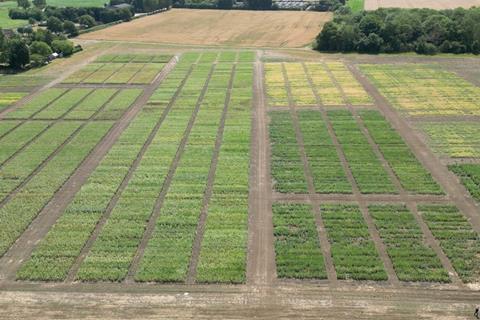PGRO details new combining peas, winter beans and spring beans
The Processors and Growers Research Organisation (PGRO) has unveiled its 2026 Descriptive List for pulses, containing 11 new pea and bean varieties.

Launched by principal technical officer Dr Chris Judge, the list contains seven new combining peas, two winter beans, and two spring beans.
Despite drought conditions across much of the country during the summer, new and existing material performed well, PGRO reported. A small number of trial sites failed, but the range of geographical locations used to conduct the descriptive list work produced sufficient data to analyse the material put forward by breeders.
“We use data gathered from five years of trials to compare varietal performance against a number of criteria, including yield, maturity, and disease resistance,” Judge said. “The control yield for peas, spring beans and winter beans were all very similar to the previous year, despite the impact of the weather.”
The Descriptive List gives growers the opportunity to compare different varieties and evaluate which will suit their situation. Promising new material from plant breeders is regularly submitted, and those which suit the market and have traits of interest are likely to be supported and available for purchase in the future.
Combining peas
Two yellow combining peas were added to the list. KWS Telegram (KWS), which is the newest highest-yielding yellow pea variety with a yield of 117 per cent, and Cushla (Senova) with a yield of 109 per cent of controls.
In the green pea category, a new variety now tops the list for yield too. KWS Arkam has very late maturity and a yield of 114 per cent. It is joined by other debutants Bullet (NPZ UK), and LG Mamba (Limagrain). All of the new green varieties have a good downy mildew score of six.
The past few years have seen several new marrowfats come into development with yield improvements. New variety Yoshi (NPZ UK) joins Midori as the joint top yielder in this category, achieving 99 per cent of control. Nyx (Elsoms) also joins the list as a new marrowfat variety with a yield of 94 per cent and a downy mildew rating of 6.
Winter beans
Winter bean growers have independent data from PGRO on two new varieties. Patagonia (NPZ UK) stands alone as the earliest-maturing bean on the whole list with a rating of 8, while Hepworth (Senova) is the only variety to have a rating of 6 for bean rust.
In 2025 a lot of winter bean trials were very short in stature with lowered branching due to stressors throughout the season, including spring drought.
Spring beans
Two low-vicine, low-convicine (LVC) lines have been assessed and added to the spring bean list for 2026. This means that they can be included at higher rates in some animal feeds. Callas (Saaten Union) has a yield of 103 per cent and has a downy mildew rating of 4, as well as being early maturing for a spring bean with a rating of 7, and it has a high protein content of 28 per cent.
Maderas (NPZ) is another LVC line joining the list, with a good downy mildew resistance rating of 6, combined with the digestibility trait, and a yield of 98 per cent. Many spring bean trials suffered in the dry and warm conditions in 2025.
The top yielding lines on the list are Notilus (Senova) and LG Eagle (Limagrain), with yields at 107 per cent and 105 per cent of controls respectively. These were new additions to the list last year and may still have limited seed availability as production is scaled up.
This will also be the case for the new lines, PGRO said, however there are several varieties with only marginally lower yield results in trials that are more widely available. LG Viper remains the most disease-resistant line with a score of 8 for downy mildew and 7 for rust.
The full Descriptive List for Pulses and Vining Peas can be found in the latest issue of The Pulse and The Vegetable Magazine.



